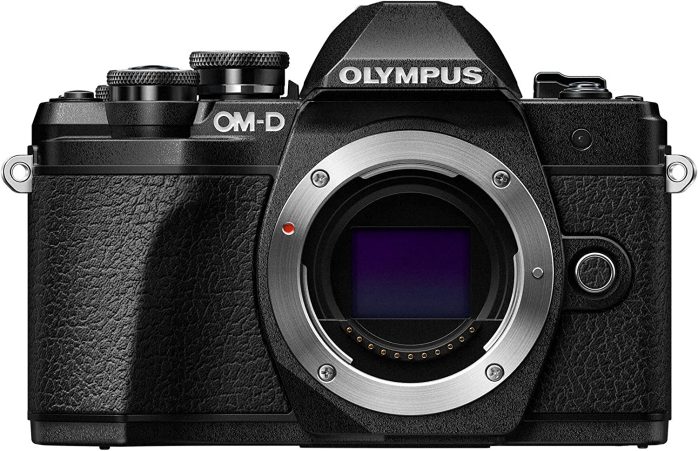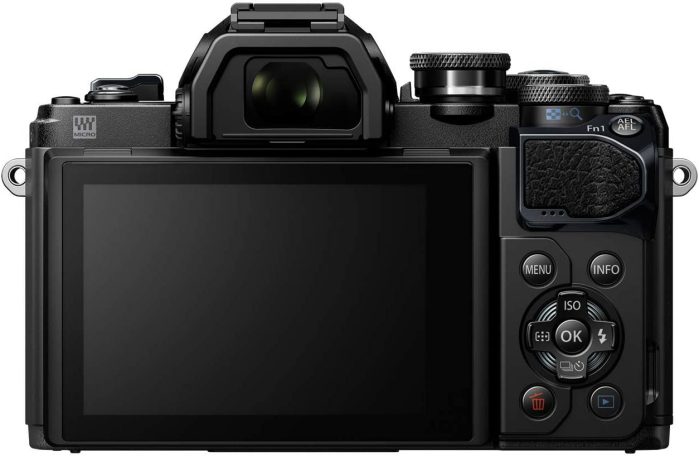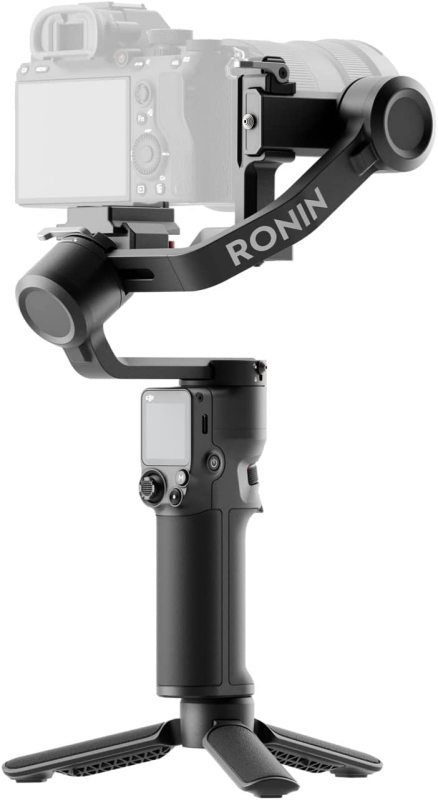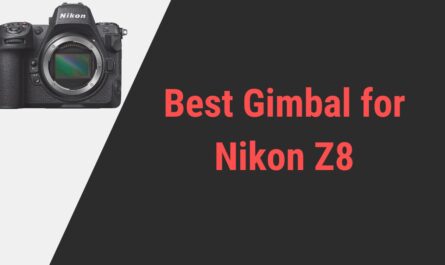If you’re a photography enthusiast or a content creator using the Olympus E-M10 III mirrorless camera, you know that capturing smooth and stable footage is crucial for professional-looking results. That’s where a gimbal comes into play.
As we all know, a gimbal is a handheld device that uses motors to stabilize your camera and eliminate unwanted shakes or jitter during shooting. It allows you to capture silky-smooth footage while walking, running, or even in challenging conditions.
But with so many options available in the market, finding the right gimbal for your Olympus E-M10 III can be overwhelming.
In this article, we have conducted extensive research and testing to bring you a curated list of the best gimbals for the Olympus E-M10 III. We will review their features, performance, and compatibility with the E-M10 III to help you make an informed decision.
Whether you’re a vlogger, filmmaker, or simply looking to improve your videography skills, our article will provide valuable insights and recommendations to choose the perfect gimbal for your Olympus E-M10 III setup.
So, let’s dive in and find the ideal gimbal that will elevate your videography to the next level!
But before we know which different gimbals that you can get for your amazing camera, why don’t we have a quick look at this amazing camera,
Olympus OM-D E-M10 III
- Sensor- 16.1-megapixel Live MOS sensor
- Image Processor TruePic VIII
- Lens Mount- Micro Four Thirds
- Image Stabilization- 5-axis in-body image stabilization (IBIS)
- ISO Range 100-25600
- Autofocus- 121-point contrast-detection AF system
- Continuous Shooting- Up to 8.6 frames per second (fps)
- Viewfinder- 2.36-million-dot OLED electronic viewfinder (EVF)
- LCD Screen- 3-inch tilting touchscreen LCD with 1.04 million dots
- Video Resolution- 4K UHD (3840 x 2160) at 30p, 25p, or 24p; Full HD (1920 x 1080) at up to 60p
- Video Features- Focus peaking, zebra pattern, adjustable frame rates
- Creative Shooting Features- Multiple art filters, scene modes, customizable picture modes
- Connectivity- Built-in Wi-Fi for image sharing and remote control
- Battery Life- Approximately 330 shots per charge (using included BLS-50 battery)
- Dimensions 4.8 x 3.3 x 2 inches (122 x 84 x 50mm)
- Weight: 14.46 oz (410g) (body only)
There is no official support from gimbal manufacturers for the OLYMPUS E-M10 III. Some features like capturing photos, focus, and start/stop recording may not work using the gimbal or wireless app so you have to manually adjust all these things from the camera when shooting.
Other than that, all the mentioned gimbals here work perfectly fine and I have personally tested them all with the OLYMPUS E-M10 III camera.
| DJI RS 3 (Best Overall)

|
| DJI RS 3 Pro (Most High-end - Highest Payload Capacity & Comes with Advanced Features)
    |
| DJI RS 3 Mini (Budget Pick)
    |
We are sure by now you know everything you need to know about the camera, and we can bring you to the list of different gimbals you should get for it,
Best Gimbal for Olympus E-M10 Mark III
1. DJI RS 3
If you are looking for a gimbal with a strong build and even better performance, your search for the gimbal might just end as soon as it begins. As we all know, the DJI RS 3 is a professional-grade gimbal for videographers and filmmakers that offers a wide range of advanced features and capabilities.
Here is a comprehensive review of the DJI RS 3, along with its technical specifications. The DJI RS 3 is a 3-axis gimbal that is designed to stabilize and control camera movements for smooth and professional-looking footage.
It is compatible with a wide range of cameras, including DSLRs, mirrorless cameras, and even some cinema cameras, with a maximum payload capacity of 3 kg, making sure that it can easily handle the weight of your Olympus E-M10 III.
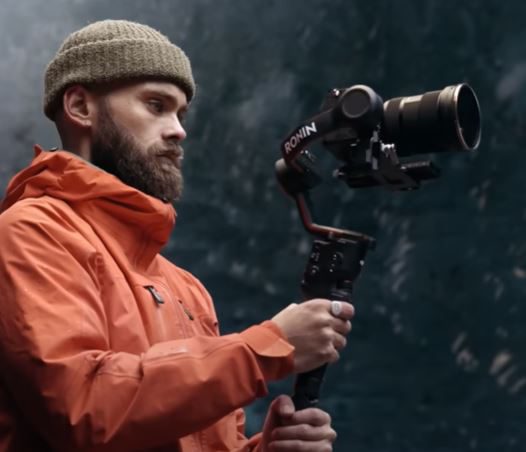

One of DJI RS 3’s standout features is its advanced stabilization system, which includes precision motors, powerful torque, and advanced algorithms. It delivers smooth, stable footage, even when shooting in difficult conditions or with difficult camera settings.
The RS 3 also features a new SuperSmooth mode for even more stability and ultra-smooth footage while walking or running. DJI RS 3 offers a variety of intelligent shooting modes, including Time Lapse, Hyperlapse, Panorama, and Roll 360.
These creative modes allow filmmakers to add dynamic and cinematic elements to their footage, making them ideal for creating professional-quality videos.
DJI RS 3 also comes with a range of professional accessories, including a carbon fiber grip, follow focus motor, and a versatile multi-function camera strap that allows for easy gimbal mounting and control.
In terms of usability, DJI RS 3 features a high-resolution touchscreen for easy access to various settings and controls, as well as a joystick and customizable buttons for precise and intuitive control.
The gimbal also features an updated two-layer Manfrotto quick-release system that makes attaching and detaching the camera easier. DJI RS 3 offers a long battery life of up to 12 hours, enabling long shooting sessions without worrying about recharging.
It also has a USB-C port for charging cameras and other devices, making it convenient for recording on the go. Although you might see that the gimbal is not fully compatible with the camera, you might have to make necessary changes in the settings to ensure that you are getting the best out of it.
Pros
- Impressive stabilization
- Great build
- Great wireless transmission
- Good battery life
- Versatile
Cons
- Costly
2. DJI RS 3 Pro
The DJI RS 3 Pro is a cutting-edge camera stabilizer that caters to the needs of professional videographers and filmmakers. Packed with advanced features and customization options, the DJI RS 3 Pro is designed to provide smooth and stable footage for a wide range of cameras, from DSLRs to cinema cameras.
In this technical gimbal article, we will delve into the key features and benefits of the DJI RS 3 Pro.
The DJI RS 3 Pro also offers a high level of customization, allowing users to fine-tune the stabilizer to their specific shooting needs. It features advanced motor and control settings, allowing users to adjust parameters such as motor strength, follow speed, and responsiveness to achieve the desired stabilization performance.
The intuitive touchscreen display and user-friendly interface make it easy to access and adjust these settings, giving users precise control over their footage. Another notable feature of the DJI RS 3 Pro is its versatility.
It offers multiple shooting modes, including pan follow, lock mode, and FPV mode, allowing users to capture a wide variety of shots, from smooth tracking shots to dynamic action sequences.
It also offers advanced time-lapse and motion-lapse features, providing creative options for capturing stunning time-lapse footage with smooth camera movements.
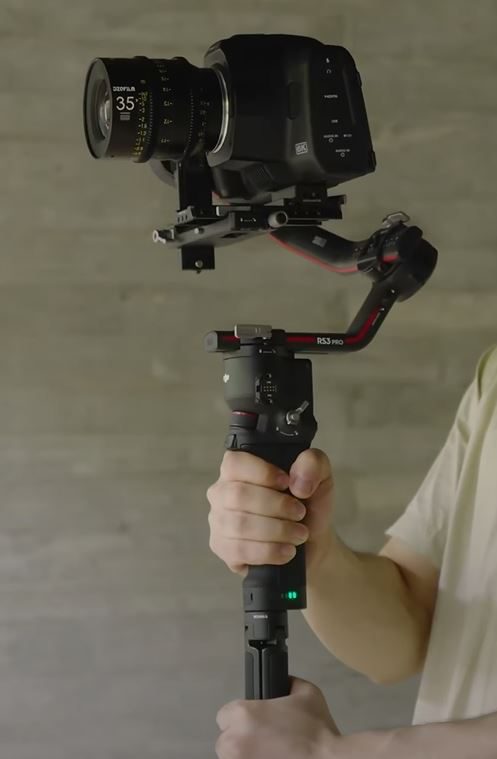

The DJI RS 3 Pro is powered by a high-capacity battery that provides up to 12 hours of runtime, allowing users to shoot for extended periods without worrying about battery life.
It also features a quick-charging system, allowing users to recharge the battery in just a few hours, ensuring minimal downtime during shoots. Built with robust and durable materials, the DJI RS 3 Pro is designed to withstand the rigors of professional use.
The gimbal features a carbon fiber frame, which provides lightweight yet sturdy construction, and it is designed to resist dust and water splashes, making it suitable for use in various shooting environments.
In addition to its impressive features, the DJI RS 3 Pro also offers a wide range of accessories and add-ons, such as focus motors, camera control cables, and a variety of mounting options, further expanding its capabilities and versatility.
Pros
- Great payload capacity
- Professional grade performance
- Versatile
- Many different modes
- User-friendly
Cons
- Price
- Bit heavy in weight
3. DJI RS 3 mini
The DJI RS 3 Mini is a compact and lightweight camera stabilizer that caters to the needs of content creators who require a portable and versatile gimbal for their filmmaking and videography needs.
With its small size and lightweight design, the DJI RS 3 Mini offers impressive stabilization performance for a wide range of cameras, making it suitable for vloggers, travel filmmakers, and other on-the-go creators.
In this technical gimbal article, we will explore the key features and benefits of the DJI RS 3 Mini. One of the standout features of the DJI RS 3 Mini is its ultra-compact design, making it easy to carry and transport.
Weighing in at just 0.99 kg, it has the capacity to handle the payload twice its own weight.
Despite its small size, the DJI RS 3 Mini offers impressive stabilization performance. It features a powerful motor and advanced stabilization algorithms, providing smooth and stable footage even during fast-paced movements.
Its 3-axis gimbal system offers pan, tilt, and roll stabilization, ensuring that the camera stays level and steady, resulting in professional-quality footage.
The DJI RS 3 Mini offers a wide range of shooting modes, including pan follow, lock mode, and FPV mode, allowing for creative freedom in capturing various types of shots.
It also offers advanced time-lapse and motion-lapse features, providing creative options for capturing stunning time-lapse footage with smooth camera movements.
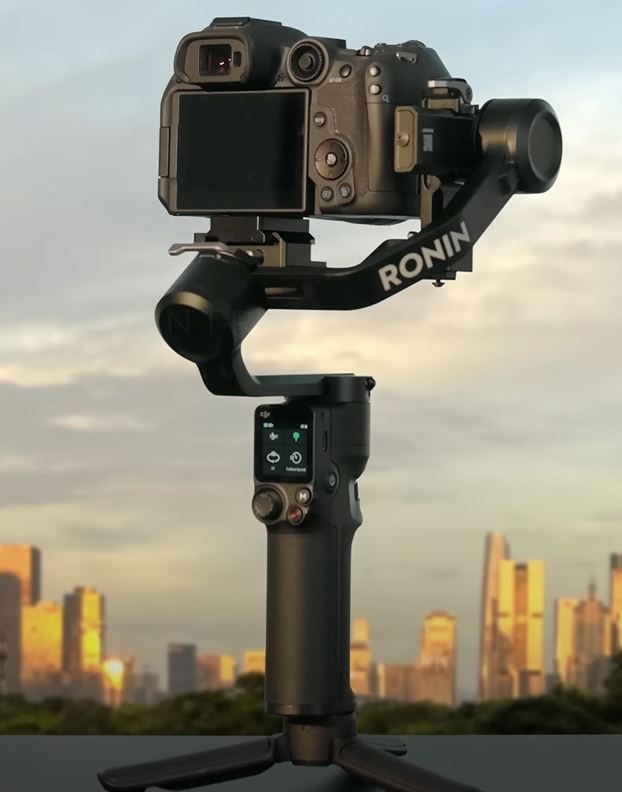

With its intuitive touchscreen display and user-friendly interface, the DJI RS 3 Mini is easy to use and navigate. It offers quick access to key settings and parameters, allowing users to fine-tune the gimbal to their specific shooting needs.
Gimbal also offers features such as ActiveTrack, which allows the gimbal to automatically follow a subject, and Force Mobile, which allows users to control the gimbal using their smartphone, providing additional flexibility and convenience.
The DJI RS 3 Mini is a compact and lightweight camera stabilizer that offers impressive stabilization performance and creative shooting options.
Its small size, lightweight design, and ease of use make it ideal for content creators who require a portable and versatile gimbal for their filmmaking and videography needs.
Whether shooting in urban environments, capturing travel footage, or vlogging on the go, the DJI RS 3 Mini is a reliable and powerful tool that empowers creators to capture smooth and professional-quality footage with ease.
Pros
- Small in size
- User-friendly
- Versatile
- Impressive battery life
- ActiveTrack
Cons
- Less payload capacity
- Balancing requires time
About Olympus E-M10 III Camera


The Olympus E-M10 III is a popular mirrorless camera known for its compact size, advanced features, and exceptional image quality. As a photography enthusiast or a professional, you need a reliable camera that can deliver outstanding performance in various shooting conditions, and the E-M10 III doesn’t disappoint.
Among many of its features, the standout feature of the Olympus E-M10 III is its compact and lightweight design, making it highly portable and easy to carry around. Despite its small size, the camera boasts a robust build quality with a magnesium alloy body that feels solid and durable in hand.
The camera also features a retro-inspired design with intuitive dials and buttons, providing quick access to key settings and making it a joy to use.
In terms of image quality, the E-M10 III packs a punch with a 16.1-megapixel Live MOS sensor and the TruePic VIII image processor, which work together to produce sharp, detailed, and vibrant images with excellent dynamic range.
The camera also offers an ISO range of 100-25600, allowing for low-light shooting with minimal noise. The E-M10 III also features a powerful 5-axis in-body image stabilization (IBIS) system, which compensates for camera shake and enables handheld shooting at slower shutter speeds, resulting in sharper images.
The autofocus (AF) performance of the E-M10 III is impressive, with a 121-point contrast-detection AF system that covers most of the frame, allowing for accurate and fast subject tracking.
The camera also offers various AF modes, including face and eye detection, which are particularly useful for portrait photography. The E-M10 III also has a high-speed continuous shooting mode of up to 8.6 frames per second (fps), making it suitable for capturing action and fast-moving subjects.
The E-M10 III also boasts a high-resolution electronic viewfinder (EVF) with a 2.36-million-dot OLED panel, providing a clear and detailed view of the scene even in bright outdoor conditions.
The camera also features a tilting 3-inch LCD touchscreen with 1.04 million dots, which offers intuitive touch controls for changing settings, navigating menus, and reviewing images. Another noteworthy feature of the E-M10 III is its video capabilities.
The camera can shoot 4K UHD video at 30p, 25p, or 24p, as well as Full HD video at up to 60p. The camera also offers advanced video features, such as focus peaking, zebra pattern, and adjustable frame rates, making it suitable for videography enthusiasts.
The Olympus E-M10 III also offers a compact and lightweight design with a magnesium alloy body, retro-inspired design with intuitive dials and buttons, and compatibility with a wide range of Micro Four Thirds lenses, making it a versatile and capable camera for various photography styles and situations.
Overall, the Olympus E-M10 III is a powerful and feature-packed mirrorless camera that delivers impressive performance and image quality in a compact form factor.
We are sure that you are aware of all three gimbals and how well they will do with Olympus E-M10 III, but it is also important to know that all of these gimbals are not completely compatible with your camera but with some tweaks from the settings you should be able to make the best of your gimbal with your camera.
But don’t worry; the article doesn’t end here. We are also here to ensure that you are making the best out of your gimbal; we have tried the combination of Olympus E-M10 III with the gimbals mentioned above and have come up with some of the best tips that will also help you, so without further ado, let us dive into it,
Tips for using your gimbal with your Olympus E-M10 III
- Cinematic Tracking Shots– Use the gimbal to smoothly track your subject as they move, creating cinematic shots with professional-looking smooth movements. Experiment with different speeds and angles to achieve the desired effect. You can use this technique for various genres, such as travel videos, documentaries, and action sequences.
- Low-Angle Shots– Take advantage of the gimbal’s stability to capture unique low-angle shots. You can easily achieve smooth, stable footage while moving close to the ground, adding an interesting perspective to your footage. This can work well for capturing subjects at ground level or creating a sense of scale in your shots.
- Panoramic Shots– Use the gimbal’s pan and tilt functions to capture sweeping panoramic shots. Slowly pan from one side to another, creating smooth and seamless transitions for panoramic shots of landscapes or cityscapes. This can add a sense of grandeur and expansiveness to your footage.
- Dynamic Follow Shots– Experiment with the gimbal’s follow mode to capture dynamic shots while moving with your subject. This can add energy and excitement to action shots, sports footage, or any fast-moving scenes. You can adjust the gimbal’s speed and sensitivity to suit the pace of your subject’s movements, resulting in smooth and professional-looking shots.
- Timelapse and Hyperlapse– Use the gimbal to create stunning timelapse or hyperlapse shots. Set up your camera on the gimbal, set the desired interval, and let the gimbal do the rest. The result will be smooth, stable timelapse or hyperlapse footage with a professional touch. This can be used to capture the passage of time, changing weather conditions, or the hustle and bustle of a busy street.
- Subject Isolation– Use the gimbal’s focus control to create shots where the subject is isolated from the background. This can add a cinematic look to your footage, drawing attention to the subject and creating a sense of depth. Experiment with different focus techniques such as rack focus, focus pulls, and bokeh effects to add creative visual elements to your shots.
- Smooth Transitions– Use the gimbal’s smooth movements to create seamless transitions between shots. For example, you can smoothly transition from a close-up shot to a wide shot or from one location to another, creating a polished and professional look for your video. This can add a storytelling element to your footage and make your video flow smoothly.
- Creative Angles– Experiment with unique angles that would be difficult to achieve without a gimbal. For example, you can capture high-angle or low-angle shots with ease, adding creativity and visual interest to your footage. Try using the gimbal to capture shots from unusual perspectives, such as over the shoulder, through narrow spaces, or from above or below the subject.
- Slow-Motion Shots– Use the gimbal to capture smooth slow-motion shots with the Olympus E-M10 III. The gimbal’s stability will help you achieve steady footage even at slow-motion speeds, resulting in professional-looking slow-motion shots. This can be used to add drama, emphasis, or artistic flair to your footage, especially during action sequences or emotional moments.
- Smooth Camera Movements– Lastly, use the gimbal to add smooth camera movements to your footage, such as gentle pans, tilts, and rolls. This can add a professional touch to your videos, making them more engaging and visually appealing. Experiment with different camera movements and speeds to add visual interest and polish to your shots.
Final Thoughts
In conclusion, when it comes to choosing the best gimbal for the Olympus E-M10 III camera, DJI offers three excellent options: DJI RS 3, DJI RS 3 Pro, and DJI RS 3 Mini.
These gimbals provide advanced stabilization technology, ease of use, and creative possibilities for videographers and photographers alike.
The DJI RS 3 is a versatile gimbal with a high payload capacity, allowing for smooth and stable shots in various shooting scenarios. The DJI RS 3 Pro offers additional features such as Force Mobile, Time Tunnel mode, and an OLED screen for enhanced control and customization.
The DJI RS 3 Mini, on the other hand, is a compact and lightweight option that is perfect for on-the-go shooting, making it an excellent choice for travel and adventure enthusiasts.
No matter which DJI gimbal you choose, you can expect professional-level stabilization, smooth camera movements, and creative possibilities to elevate your videography and photography to new heights.
Consider your shooting needs, budget, and preferences to select the best gimbal that suits your requirements and unlocks the full potential of your Olympus E-M10 III camera.


